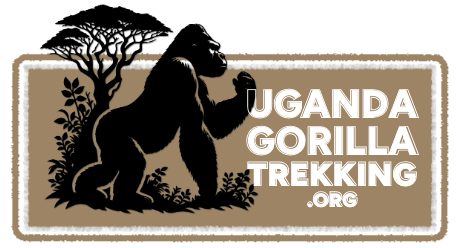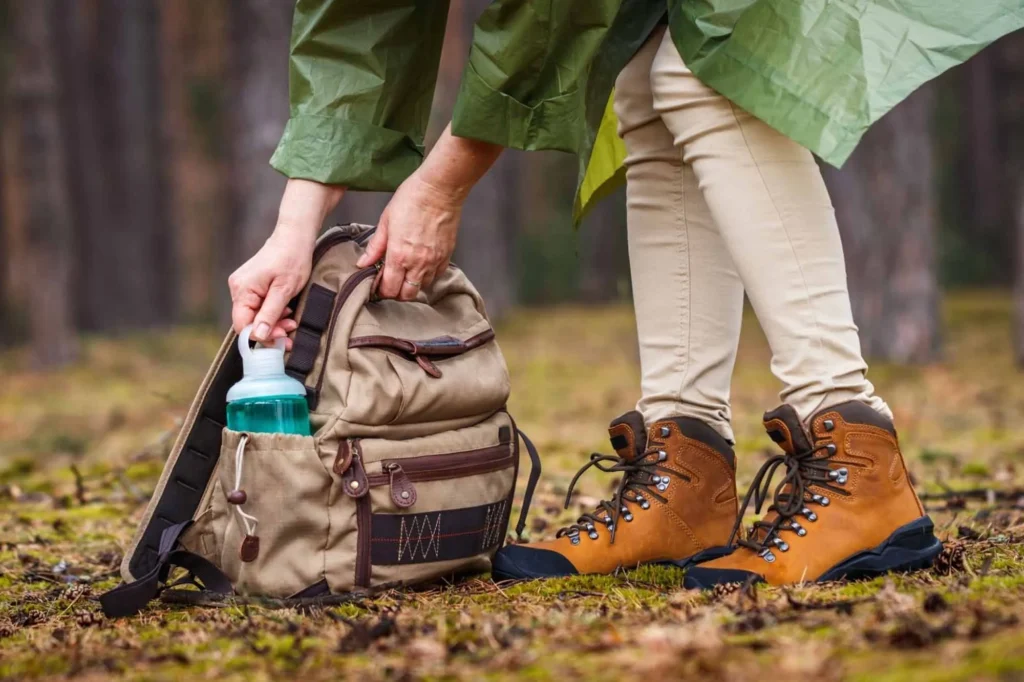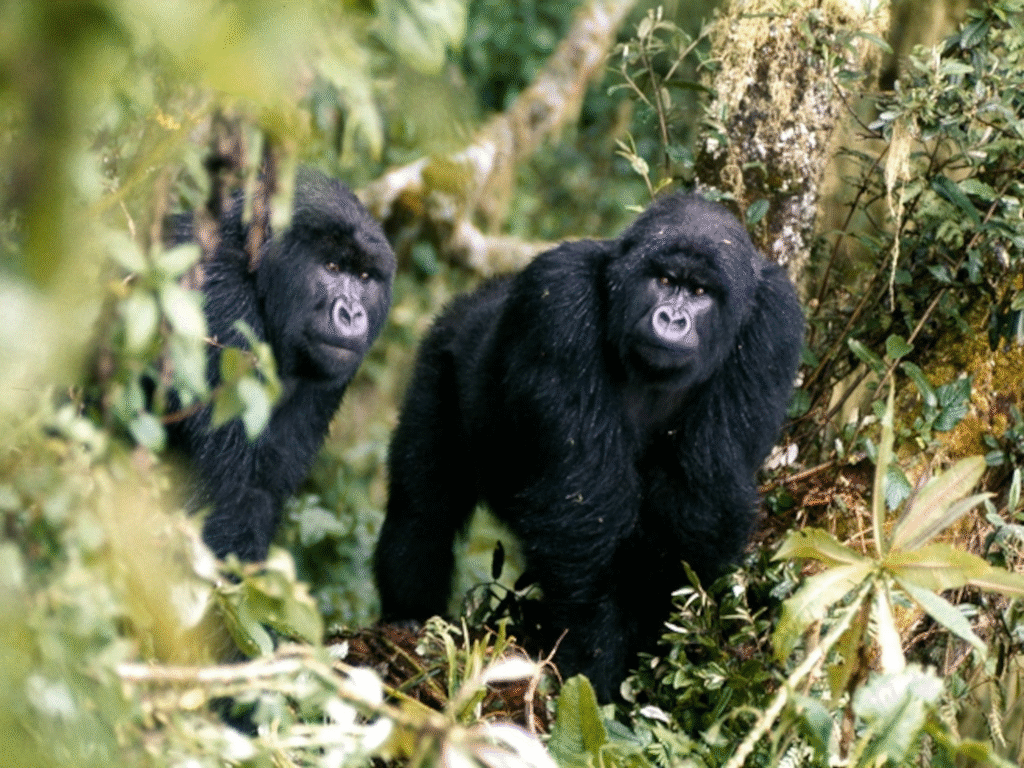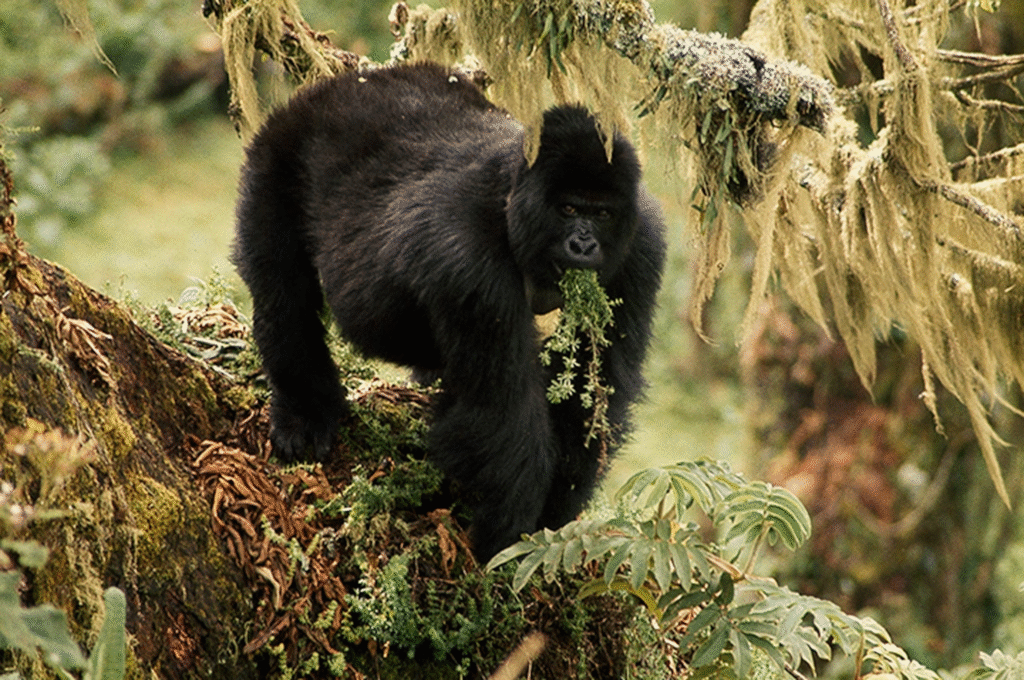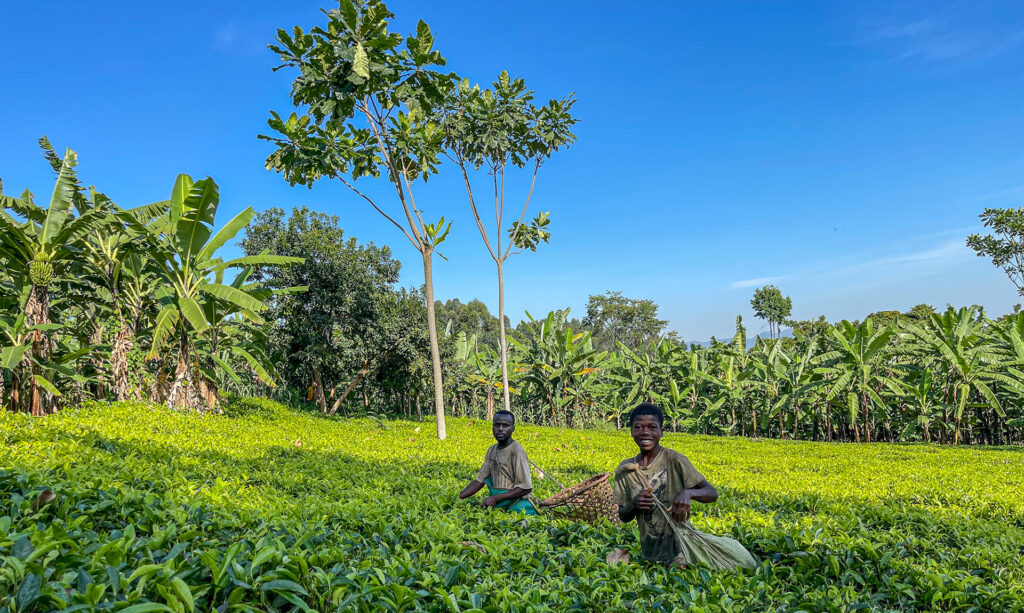Where the soul of the forest whispers in the mist
Gorilla trekking in Uganda is one of the most extraordinary wildlife experiences on Earth, but timing your visit can make a big difference in how it unfolds. Uganda’s rainforest climate means that while trekking is possible year-round, the experience shifts subtly with each season. The two dry periods—December to February and June to September—offer the best trail conditions, making them the most popular times for trekking. Trails are firmer, photography is clearer, and your chances of uninterrupted gorilla viewing are highest.
On the other hand, the wetter months—March to May and October to November—bring lush scenery and fewer tourists, offering a more intimate forest experience at lower costs. While the rain can make trails slippery and more challenging, sightings are still excellent.
Whether you’re seeking peak conditions or solitude in the mist, understanding Uganda’s seasonal rhythms helps you choose the perfect moment to meet the gorillas — when the forest is alive, the air is cool, and the wild is ready to welcome you.
This guide helps you navigate the best months for gorilla trekking Uganda, breaking down what to expect during wet and dry seasons, how tourism levels affect the experience, and what kind of atmosphere you’ll find in the forest depending on when you go. Whether you’re aiming for clear skies or quiet trails, this is where you find the perfect time to meet the gorillas — not just when the forest is open, but when it’s speaking directly to you.
So lace up your boots, grab your camera, and prepare to meet the wild — this is where your gorilla trekking dreams and unforgettable safari adventures truly begin.
Truly Iconic Highlights in Uganda
Trek through Bwindi’s mystical rainforest and meet the endangered mountain gorillas in their breathtaking natural home.
Encounter mountain gorillas and golden monkeys on Mgahinga’s misty volcanic trails, where culture and alpine wildlife thrive together.
Unwind after your trek with a peaceful canoe ride across Lake Bunyonyi, Uganda’s most tranquil and scenic highland lake.
Enhance your gorilla trekking safari with an optional chimpanzee encounter in Uganda’s lush forests, adding depth and diversity to your primate adventure
Best Time for Gorilla Trekking in Uganda: How to Plan Your Perfect Encounter
For many travelers, gorilla trekking isn’t just another safari stop — it’s a once-in-a-lifetime encounter. But when planning such a personal and deeply immersive experience, timing is everything. From trail conditions and gorilla behavior to the atmosphere of the forest itself, the best time for gorilla trekking in Africa can make all the difference in how the journey unfolds.
Whether you’re preparing to meet a silverback in Uganda’s mystical Bwindi Forest, Rwanda’s volcanic peaks, or the dense jungles of the DRC, understanding the seasons — both in terms of climate and tourism — is essential. So let’s step into the mist together and uncover the rhythms of the forest, so you can choose your moment wisely.
Understanding the Seasons: Dry vs. Wet and What They Mean for Trekkers
The Albertine Rift region, which hosts all mountain gorilla trekking destinations, doesn’t follow the classic four seasons. Instead, it experiences two dry seasons and two rainy seasons, each offering its own unique set of rewards and challenges.
The Dry Seasons: June to September and December to February
These are widely regarded as the best months for gorilla trekking. Rain is less frequent, trails are more accessible, and the overall trekking experience tends to be more comfortable and manageable.
In June, July, and August, the skies are clear, the temperatures are mild, and vegetation is less dense — offering unobstructed views of gorillas in their natural habitat. The drier forest floor also makes hiking safer and less strenuous, especially for older or less experienced trekkers.
From December to February, the short dry season returns. Though slightly warmer and more humid, this period still provides excellent conditions for trekking, photography, and extended stays in the parks. For travelers seeking a balance of good weather and slightly fewer crowds, January can be an ideal choice.
Insider Insight: These dry months also coincide with peak travel periods, especially in Rwanda and Uganda. Booking your gorilla permits and accommodations at least 6 months in advance is highly recommended.
The Wet Seasons: March to May and October to November
Often overlooked by first-time travelers, the rainy seasons have a charm all their own — if you come prepared. From March to May, heavy rains soak the forests, turning trails into slippery challenges and increasing the intensity of the trek. However, this is when the forest is at its most lush and alive, with emerald canopies, blooming flora, and dramatic mist that photographers and nature lovers often find irresistible.
Gorillas tend to stay closer to the foothills during the wet season because food is more abundant at lower elevations — meaning treks can actually be shorter. The downside is muddy paths and a higher chance of delayed start times due to weather.
The October–November period, also part of the wet cycle, is generally less intense than the long rains of April and May. With the right gear — waterproof boots, rain jackets, gloves — and a flexible attitude, many visitors find trekking in the rainy season more intimate and soul-stirring.
Insider Insight: This is also considered the low season, meaning fewer tourists, reduced lodge rates, and greater permit availability. If you value solitude and don’t mind a bit of mud, the wet season could offer a more private, raw experience.
Month-by-Month Breakdown: What You Can Expect In Uganda
Uganda in January
January marks the heart of Uganda’s short dry season, offering favorable trekking conditions in Bwindi and Mgahinga. While light showers can still occur, trails are generally more accessible, and the misty forests remain lush and vibrant. This period sees high demand, especially around New Year, so booking permits and lodges in advance is essential — particularly for premium accommodations.
Travelers combining gorilla trekking with visits to other parks like Queen Elizabeth or Kibale can enrich their safari experience. Birding is excellent in January too, with both local and migratory species active. For scenic hikes, clear photography, and rewarding wildlife encounters, January is a great time to explore Uganda’s natural beauty.
- Weather: Generally dry, warm days and cool evenings; occasional light showers possible.
- Gorilla Trekking: Excellent trail conditions; book permits early due to high demand.
- Wildlife Viewing: Prime time for game drives and boat safaris in major national parks.
- Birding: Superb, with both resident and migratory species active.
- Crowds & Costs: Popular season; prices for lodges and tours reflect demand.
- Travel Tip: Book accommodations and permits at least 3–6 months in advance.
February in Uganda
February continues Uganda’s short dry season, offering warm, sunny days and cooler evenings perfect for gorilla trekking in Bwindi and Mgahinga. Trails remain accessible with minimal rainfall, making treks less challenging and more enjoyable. This month is ideal for travelers seeking both comfort and rich wildlife encounters, though it still remains important to book permits and accommodations early to avoid disappointment.
Beyond gorilla trekking, February is a prime time for game drives in Queen Elizabeth and Murchison Falls National Parks, where animals gather near water sources. Birdwatchers will delight in the active presence of both resident and migratory species. The dry conditions also provide excellent visibility for photography, highlighting Uganda’s stunning landscapes and diverse fauna.
- Weather: Warm and dry with clear skies; cool evenings.
- Gorilla Trekking: Excellent trail conditions; permits should be secured early.
- Wildlife Viewing: Prime for game drives with concentrated animal activity.
- Birding: Outstanding opportunities with diverse bird populations.
- Crowds & Costs: Popular travel month; advance bookings recommended.
- Travel Tip: Arrange permits and lodges at least 3–6 months ahead.
March in Uganda
March marks the transition from the short dry season to the long rainy season in Uganda. Early in the month, conditions remain favorable for gorilla trekking in Bwindi and Mgahinga with mostly dry trails and comfortable temperatures. As the rains begin to increase towards the end of the month, trails can become muddier, so preparation for wet conditions is essential. Wildlife viewing remains excellent as animals remain active before the heavy rains arrive.
Birdwatchers will find March rewarding, with migratory species still present alongside resident birds. The increased moisture revitalizes the landscapes, making Uganda’s national parks lush and scenic. This month offers a balance between fewer crowds and rich wildlife encounters, making it a great choice for travelers seeking a more tranquil experience.
- Weather: Mostly dry early, increasing rain later; warm days and cool nights.
- Gorilla Trekking: Good trail conditions early; prepare for mud late month.
- Wildlife Viewing: Active animal sightings; good before heavy rains.
- Birding: Diverse bird populations; migratory and resident species.
- Crowds & Costs: Moderate visitor numbers; more availability.
- Travel Tip: Pack rain gear and waterproof footwear for later March.
April in Uganda
April is the heart of Uganda’s long rainy season, bringing regular and often heavy downpours that refresh the forests and plains alike. Gorilla trekking in Bwindi and Mgahinga becomes more challenging as trails turn slippery and muddy, but the thick mist and vibrant greenery create a deeply immersive jungle experience. The rains bring a quieter time in the parks with fewer visitors, offering those who brave the weather a more intimate wildlife encounter.
Wildlife activity remains steady, with many animals taking advantage of the abundant water and fresh vegetation. Birdlife is spectacular, as migratory species mingle with year-round residents amid the lush foliage. While travel logistics require flexibility during April, the raw beauty of Uganda’s wild places shines brightest under the nourishing rains.
- Weather: Frequent heavy rains; cooler temperatures; lush landscapes.
- Gorilla Trekking: Trails muddy and slippery; fewer crowds; immersive forest.
- Wildlife Viewing: Consistent sightings; animals thrive in wet season.
- Birding: Excellent, with diverse resident and migratory birds.
- Crowds & Costs: Low season; good availability and lower prices.
- Travel Tip: Waterproof gear essential; prepare for flexible itineraries.
May in Uganda
May continues Uganda’s long rainy season, with frequent showers keeping the landscape lush and vibrant. Though the weather can be wet and the trails muddy, gorilla trekking in Bwindi and Mgahinga remains possible and deeply rewarding for those ready to embrace the elements. The forest is alive with renewed energy, and the misty atmosphere adds a mystical quality to your trekking experience.
Wildlife thrives amid the greenery, with many animals more visible as they come to water sources. Birdwatchers enjoy excellent opportunities as migratory species mix with local birds in full breeding plumage. May is still considered low season, meaning fewer tourists, more personalized experiences, and often better rates for accommodations and tours.
- Weather: Regular rain showers; warm days and cool nights; lush scenery.
- Gorilla Trekking: Trails slippery but accessible; fewer crowds; unique ambiance.
- Wildlife Viewing: Active animals; good visibility near waterholes.
- Birding: Outstanding, with diverse species and breeding activity.
- Crowds & Costs: Low season; quiet parks and competitive pricing.
- Travel Tip: Pack waterproof gear and sturdy boots; book flexible tours.
June in Uganda
June marks the beginning of Uganda’s long dry season, bringing cooler temperatures, clearer skies, and more comfortable trekking conditions. Bwindi and Mgahinga offer crisp mornings and drier trails, making gorilla trekking especially enjoyable and accessible. This month is ideal for travelers seeking a blend of pleasant weather and vibrant wildlife activity.
Wildlife viewing is at its peak in Uganda’s national parks, with animals gathering around shrinking water sources, making game drives and boat safaris in Queen Elizabeth and Murchison Falls exceptionally rewarding. Birdwatchers also benefit from the dry season’s clarity, spotting both resident and migratory species with ease. June is moderately busy, so booking permits and accommodations early is recommended.
- Weather: Dry and cooler; crisp mornings and sunny days.
- Gorilla Trekking: Excellent trail conditions; great visibility.
- Wildlife Viewing: Prime time for game drives and boat safaris.
- Birding: Clear skies; both resident and migratory birds active.
- Crowds & Costs: Moderate season; early bookings advised.
- Travel Tip: Pack layers for cool mornings and warm days.
July in Uganda
July is one of the most popular months to visit Uganda — and for good reason. With dry, sunny days, minimal rainfall, and cool, refreshing evenings, this month delivers some of the best conditions for gorilla trekking and safari adventures across the country. The dense forests of Bwindi and Mgahinga are at their most navigable, offering visitors a comfortable and rewarding trekking experience with clearer views and less muddy terrain.
In Uganda’s savannah parks like Queen Elizabeth, Murchison Falls, and Kidepo Valley, wildlife is highly visible as animals cluster around water sources. This is prime time for boat safaris, game drives, and chimpanzee trekking in Kibale Forest. July is also excellent for birding, with forest trails and wetlands offering crystal-clear views. Being a peak travel season, permits and accommodations are in high demand — advance booking is essential to secure your preferred sector and lodge.
- Weather: Very dry; cool mornings and warm, sunny afternoons.
- Gorilla Trekking: Peak season; great visibility and trail conditions.
- Wildlife Viewing: Outstanding; animals gather near water.
- Birding: Excellent for spotting forest and savannah species.
- Crowds & Costs: High season; permits and lodges sell out fast.
- Travel Tip: Book permits 6 months ahead and pack for both sun and cool mornings.
August in Uganda
August continues Uganda’s long dry season, offering yet another excellent window for gorilla trekking and safari expeditions. The trails in Bwindi and Mgahinga remain dry and stable, making the forest hikes more comfortable and rewarding. Mist still weaves through the trees in the early mornings, adding that magical atmosphere to gorilla encounters without the heavy rains to disrupt the journey.
In the savannah parks, the wildlife action intensifies. Waterholes become lifelines, drawing elephants, lions, buffalo, and antelope into full view — ideal for dramatic game drives and boat safaris. Chimpanzee tracking in Kibale Forest is active, and birdwatching remains strong across Uganda’s ecosystems. August is a peak month, so expect more visitors and higher rates for accommodation. Early planning ensures you won’t miss out on prime sectors or preferred lodges.
- Weather: Dry, clear skies with cool evenings and warm, sunny days.
- Gorilla Trekking: Excellent; dry trails and spectacular visibility.
- Wildlife Viewing: Superb; animals congregate around limited water sources.
- Birding: Very good; visibility improves in forests and wetlands.
- Crowds & Costs: High season; book early for best availability.
- Travel Tip: Prioritize gorilla permit bookings and pack layers for cool mornings.
September in Uganda
As Uganda’s long dry season begins to taper off, September emerges as a transitional gem — offering a sweet balance of good weather, fewer crowds, and exceptional wildlife viewing. Gorilla trekking remains highly rewarding, with trails in Bwindi and Mgahinga still dry and accessible, though the occasional light shower may begin to return, refreshing the landscape without interrupting adventure.
In the savannah parks, wildlife continues to concentrate around remaining water sources, providing thrilling sightings with less competition from other vehicles. Birdwatchers will find increased activity, especially as migratory species begin to arrive. Accommodation availability improves slightly compared to August, and pricing can be a touch more favorable — making September a smart and serene choice for travelers looking to experience Uganda’s wilderness at its best.
- Weather: Mostly dry with signs of approaching rain; pleasant daytime temperatures.
- Gorilla Trekking: Excellent with fewer tourists; slight chance of light rain.
- Wildlife Viewing: Still strong, especially near waterholes in Queen Elizabeth and Murchison.
- Birding: Active month, with migratory patterns beginning to shift.
- Crowds & Costs: Less crowded than August; slightly lower rates in some areas.
- Travel Tip: A great month for photographers — golden light and clear views are common.
October in Uganda
October welcomes the return of Uganda’s short rainy season, transforming the landscapes into vibrant green and breathing new life into the wilderness. While showers become more frequent, they are typically brief and interspersed with sunny spells — making gorilla trekking and game drives still very possible for well-prepared travelers. Trails in Bwindi and Mgahinga may be muddy but remain open, with gorilla sightings as magical as ever.
One of October’s greatest advantages is its calm — fewer tourists mean quieter lodges, less crowded parks, and a more intimate safari experience. Photographers will love the refreshed scenery and moody light, while birding enthusiasts can enjoy increased avian activity across Uganda’s forests and wetlands. If you’re willing to trade a bit of rain for space and solitude, October offers surprising rewards.
- Weather: Beginning of short rains; expect afternoon showers and lush conditions.
- Gorilla Trekking: Still possible, though trails can be muddy; permits more available.
- Wildlife Viewing: Good, with animals still active though slightly more dispersed.
- Birding: Excellent month as migratory species increase.
- Crowds & Costs: Fewer visitors, with more favorable rates in many lodges.
- Travel Tip: Pack waterproof gear and embrace the serenity — October is ideal for solitude seekers.
November in Uganda
November brings Uganda’s short rainy season into full swing, refreshing the forests of Bwindi and Mgahinga with life and color. While rainfall is more consistent this month, it’s often limited to afternoon downpours or overnight showers, allowing plenty of dry windows for trekking and wildlife viewing. Trails can be slippery, but the jungle is at its most atmospheric — misty, alive, and echoing with birdsong.
Fewer tourists travel in November, making it a prime month for those seeking solitude and value. Lodge rates are often lower, and gorilla permits are more readily available. It’s also one of the best times of the year for birdwatching, with migratory species arriving in droves to join Uganda’s already rich avifauna. If you don’t mind a little mud, November offers raw, uncrowded magic across Uganda’s wild places.
- Weather: Rainy season; lush greenery and afternoon showers.
- Gorilla Trekking: Good sightings; trails can be muddy, but permits are easier to get.
- Wildlife Viewing: Still rewarding, though animals may be more scattered.
- Birding: Excellent, with many migratory species arriving.
- Crowds & Costs: Low season; great for deals on lodges and tours.
- Travel Tip: Waterproof gear and flexible plans make November a rewarding, peaceful time to visit.
December in Uganda
December in Uganda signals the return of drier weather and the beginning of the peak travel season. As rains taper off, trails in Bwindi and Mgahinga become firmer, offering excellent conditions for gorilla trekking. The forest is still lush from recent rains, creating a stunning green backdrop for wildlife viewing and photography. Holiday travelers begin arriving early in the month, making it essential to book your permits and accommodations well in advance.
With school breaks and festive holidays, December is a popular time for family safaris and multigenerational travel. Game drives in Queen Elizabeth and Murchison Falls are particularly rewarding, and birdwatching remains fantastic as migratory species linger. The festive season also brings cultural vibrancy, with local events and community interactions adding color to your journey. December blends the magic of wildlife with the warmth of Ugandan hospitality.
- Weather: Start of dry season; warm days and occasional showers.
- Gorilla Trekking: Excellent; high demand means early booking is essential.
- Wildlife Viewing: Prime conditions across major parks.
- Birding: Still excellent, with many migratory birds present.
- Crowds & Costs: Peak season; prices rise and availability tightens.
- Travel Tip: Confirm permits and lodging several months ahead to secure your preferred dates.
January – Dry, green, and ideal.
Great weather, minimal crowds, and excellent gorilla viewing. The forest remains lush from recent rains.
February – Warm and dry.
Excellent trekking conditions and one of the best months for combining gorilla trekking with other wildlife safaris in Uganda or Rwanda.
March to May – Long rainy season.
Expect muddy trails and heavier rain, but shorter treks and incredible greenery. Lodge prices drop.
June to August – Peak dry season.
Best overall conditions, especially in Bwindi and Volcanoes National Park. High demand, early bookings essential.
September – Transitional.
Still dry, but with more overcast days. Ideal for avoiding crowds while enjoying good conditions.
October to November – Short rainy season.
Unpredictable weather but still great for photographers and experienced trekkers seeking a quieter experience.
December – Beginning of the dry season.
Perfect for holiday travelers, with lush landscapes and great wildlife opportunities. High demand returns.
Other Factors to Consider Beyond Weather
Gorilla Behavior
While gorillas are present year-round, their movements shift with the seasons. During dry months, they may move higher into the forest to forage, while during the rainy season, they remain lower, often making treks shorter.
Birdwatching Opportunities
If you’re a birder, the rainy seasons (especially March to May) bring a burst of migratory birds. The forests around Bwindi and Volcanoes National Park come alive with color and song.
Photography Conditions
For the most dramatic photography — think gorillas emerging from mist and verdant backdrops — the shoulder months (March, April, November) often deliver unparalleled beauty.
More Gorilla Trekking Information to Know.
Gorilla trekking goes far beyond just the hike — it’s a deep, emotional journey into the heart of Africa’s last wild rainforests. Knowing the right timing, permits, fitness tips, and park details can turn your experience from good to unforgettable.
In the Realm of Giants – Bwindi & Mgahinga in Frames.
Wander through an elegant gallery capturing Uganda’s most exclusive gorilla sanctuaries, where ancient forests cradle the last mountain gorillas in a world of mist, mystery, and majesty.
Essential Planning Tips for Visiting Uganda’s National Parks.
Get ready for the wild heart of Africa with expert travel tips on when to visit, what to pack, where to go, and how to make the most of your safari across Uganda’s breathtaking national parks.
Why Uganda for Gorilla Trekking?
Uganda is not just a destination — it's the very soul of gorilla trekking. With over half of the world’s remaining mountain gorillas calling its misty forests home, Uganda offers the rarest encounters in their most authentic setting. Here, your journey is not rushed or crowded. Instead, you’re guided by experienced rangers through pristine jungles where gorillas live as they always have — wild, free, and magnificent
From insider travel insights to unforgettable trekking guides, our blog is your trusted path into Uganda’s wild heart — connecting you with mountain gorillas, breathtaking landscapes, and the soul-stirring adventures that make this land unlike any other.
